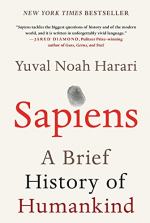
|
| Name: _________________________ | Period: ___________________ |
This test consists of 5 multiple choice questions, 5 short answer questions, and 10 short essay questions.
Multiple Choice Questions
1. In what year did Hernan Cortes and his conquistadors invade Mexico?
(a) 1501.
(b) 1519.
(c) 1592.
(d) 1498.
2. Since around what year have most humans lived in empires?
(a) 700 BC.
(b) 1200 BC.
(c) 200 BC.
(d) 3500 BC.
3. The Australian World comprised which parts of earth in 1450 AD?
(a) Only the continent of Australia.
(b) Most of Central America and parts of North America.
(c) Most of western South America.
(d) Australia and eastern Asia.
4. The Aztec Empire at its pinnacle was much smaller than what modern-day nation?
(a) Peru.
(b) Mexico.
(c) Greece.
(d) New Zealand.
5. From what culture did the myth of Gilgamesh spring?
(a) The Babylonians.
(b) The ancient Sumer.
(c) The Incas.
(d) The Aztecs.
Short Answer Questions
1. The measurement called a sila was equivalent to how many gallons?
2. Harari states that "Today anyone with" what kind of income "can safely and easily circumnavigate the globe" (248)?
3. The total value of goods and services produced by humans in the year 1500 was how much in 2015 money?
4. What objects were used as money "for about 4,000 years all over Africa, South Asia, East Asia, and Oceania" (177)?
5. The sum total of banknotes and coins existing in the world, according to Harari, is what?
Short Essay Questions
1. What does Harari say is the key to understanding a particular culture?
2. What connections does Harari draw among capitalism, modern science, and the emergence of European imperialism?
3. After Harari describes the rise of Europe as a locus of power in the world, what caveat does he make?
4. What is Harari's purpose for alluding to the launching of the Great Survey of India that occurred on "10 April 1802" (297)?
5. What is Harari's view of how the Cook expedition marked a turning point within European history?
6. According to Harari, how did the Scientific Revolution affect humankind's notion of progress?
7. How does Harari support his position that history is moving toward more unified and complex cultures?
8. What evidence does Harari use to demonstrate the profound effect that empires and their belief systems have had on history, even among those cultures that consider themselves anti-imperialist?
9. How does Yuval Noah Harari define culture and what does he assert about its mutability?
10. For what purpose does Harari include the painting called Franklin's Experiment within the chapter entitled The Discovery of Ignorance?
|
This section contains 1,244 words (approx. 5 pages at 300 words per page) |

|




